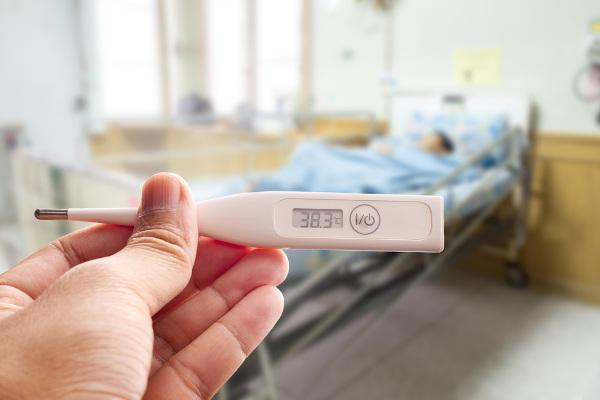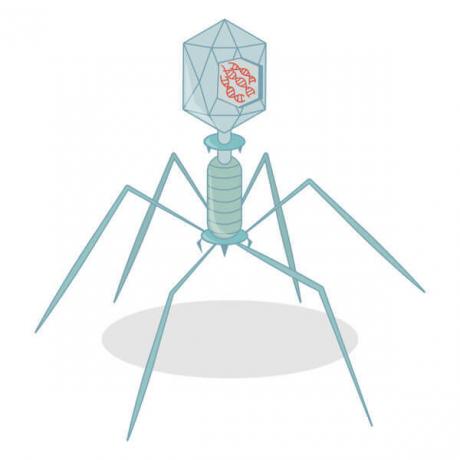THE osteoporosis is a health problem that causes fragility bone, thus increasing the risk of fractures. This disease is relatively common and mainly affects women after menopause. According to data from the Brazilian Society of Endocrinology and Metabolism, it is estimated that 1 in 4 women over 50 develop the disease. About 10 million Brazilians suffer from osteoporosis.
Read too: Consequences of aging for the locomotor system
What is osteoporosis?
Osteoporosis is a disease characterized by a decreased bone mass and deterioration of its microarchitecture. It can affect every bone in our body, making them weaker and therefore more prone to fracture. These fractures most often affect the vertebrae, radius and femur and can occur even in low impact situations. According to the Brazilian Society of Rheumatology, the bone of an individual with osteoporosis is so weak that there may be flattening of the vertebra, leading to a shortening of the spine and a reduction in height.
Risk factors for the development of osteoporosis

Risk factors for the development of osteoporosis can be classified into two groups: individual and environmental. Individuals are those inherent to the individual, such as cases of osteoporosis in the family, female gender, white ethnicity, scoliosis and low body mass index. Environmental factors are related to situations such as poor nutrition, alcohol and cigarette consumption, caffeine use, inactivity, among others. The latter, therefore, can be preventable, and healthy habits throughout life can lower the risk of developing the problem.
Read too: Importance of calcium in the body
Types of osteoporosis
According to the Brazilian Society of Rheumatology, we can classify osteoporosis into three basic types: postmenopausal osteoporosis, senile osteoporosis and secondary osteoporosis.
Postmenopausal osteoporosis: as the name suggests, this type affects women after menopause. This is due to the fact that, during menopause, there is a drop in the levels of estrogen, which are essential in maintaining bone mass. It is very much associated with fractures in the vertebrae, the bones that make up our spine.
Senile osteoporosis: it affects people over 70 years of age, being related to aging, and this bone loss is a natural process. Occurs as a consequence of a deficiency in calcium, increased parathyroid hormone activity (increases the availability of calcium in the blood) and decreased bone formation.
Secondary osteoporosis: it is related to kidney problems, endocrine, hematological or even with the use of medications.
Do not stop now... There's more after the advertising ;)
Osteoporosis Symptoms
Generally speaking, osteoporosis has few symptoms. When they do arise, they are usually associated with fractures, which can be caused by minimal trauma. Hip fractures are among the most serious and are related to a high mortality rate in the years following the injury.
It is estimated that more than 50% of patients who survive a hip fracture are no longer able to live independently. According to the Brazilian Society of Endocrinology and Metabolism, in Brazil, every year there are about 2.4 million fractures resulting from osteoporosis, and 200,000 people die annually from fractures.
Read too: Difference between fracture, sprain and dislocation
Osteoporosis Diagnosis
Osteoporosis is diagnosed based on the analysis of the patient's symptoms, physical examination and also the performance of some tests, such as laboratory and imaging. The most indicated test for the diagnosis of osteoporosis is the bone densitometry, which can estimate the bone mass of the spine and femur. This exam is painless, safe and essential for an early diagnosis, as it can identify the loss of bone mass at an early stage.

Osteoporosis treatment
The treatment of osteoporosis is individualized and must take into account the causes of the disease. THE calcium supplementation and vitamin D is commonly recommended, as well as the practice of physical exercise, which, among other functions, helps to strengthen the muscles and prevent falls. In the case of women, the postmenopausal estrogen therapy can be indicated. In addition, a drug therapy to prevent bone resorption, for example. The treatment aims to reduce the chances of fracture, since osteoporosis is a disease that has no cure.
Prevention
It is worth highlighting here the importance of preventing osteoporosis in order to achieve a better quality of life in old age. Among the measures considered as preventive, we can mention:
practice of physical activities;
adequate food that provides calcium to the body;
do not smoke;
avoid excessive alcohol consumption;
do not overuse salt in food and coffee.
Remember that prevention of osteoporosis must begin in childhood and that healthy habits must accompany us throughout our lives.
By Vanessa Sardinha dos Santos
Biology teacher
Would you like to reference this text in a school or academic work? Look:
SANTOS, Vanessa Sardinha dos. "Osteoporosis"; Brazil School. Available in: https://brasilescola.uol.com.br/doencas/osteoporose.htm. Accessed on June 27, 2021.


